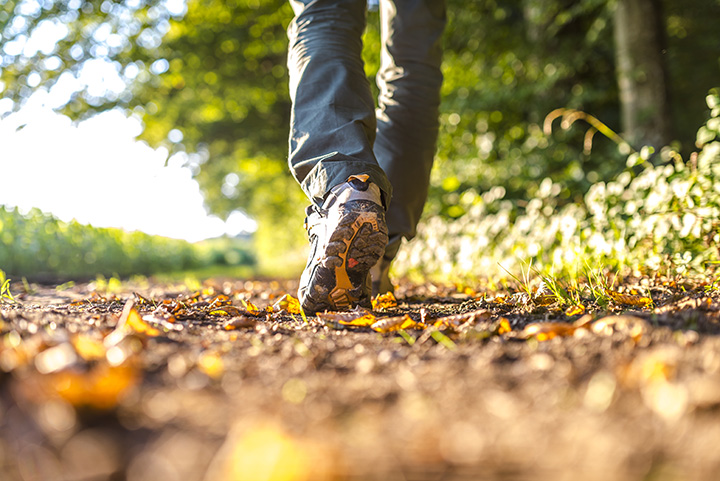Lake Okeechobee Sanctuaries

History of Audubon's Okeechobee Sanctuaries
Audubon's protection of Lake Okeechobee and the nearby Kissimmee Prairie started in 1936 when Marvin Chandler became the first, in a series of family members, to patrol the vast area. A native of the region, Chandler raised cattle on the Kissimmee Prairie following World War I. He was deputized to enforce wildlife laws, and one of his initial charges was to protect the 29,000 acres of Lake Okeechobee designated as Audubon Sanctuaries by the State of Florida. Chandler also protected wading bird colonies, with 24-hour watches over critical rookeries during nesting season.
Marvin gained the cooperation of his neighbors who saw his presence as a deterrent to rustlers and allowed him to expand his preservation work to their lands. One of his greatest challenges was foiling egg collectors, who sought prized eggs from Florida specialty birds such as Audubon's Crested Caracaras, Florida Sandhill Cranes, wading birds and more. One of his early strategies was climbing Caracara nest trees to stamp the eggs "Property of the National Audubon Society" which apparently ruined their black market value to the egg collectors!
Marvin's nephews succeeded him as wardens and by the 1960s, a strong network of State Wildlife Officers meant Audubon was no longer needed as main wildlife enforcement presence. Audubon wardens counted and patrolled wading bird colonies and conducted bird studies. At the time, the Everglades Kite (now known as the Snail Kite) was already listed as "endangered." Warden Rod Chandler noticed that Kite nests built in reeds often blew down, so he began putting baskets under the nests, increasing nest success immediately.
Today, Audubon is leading the fight for clean water, exotic plant control, and proper water level management to protect our Sanctuaries and the lake itself. A large part of these efforts are directed at cleaning up the Lake’s entire watershed, which extends to Orlando. These problems have deep roots and only through long concerted effort will they be corrected.
Lake Okeechobee Sanctuary
This sanctuary is one of Audubon’s hardest to visit—since it literally occupies submerged parts of the lake! Lake Okeechobee, although beleaguered, still has marvelous qualities and spectacular wildlife resources. Snail Kites, wading birds, waterfowl, Purple Gallinules, and myriad fish, frogs, snakes and turtles rely on this sanctuary and few comparable remnants of wild Florida remain.
Ordway-Whittell Kissimmee Prairie Sanctuary
This Sanctuary protects Florida's endemic "dry prairie" ecosystem. After World War II, the native prairies, which originally covered perhaps 2.8 millions acres, were being plowed under and replaced with citrus, row crops, or tame grass pastures. By the 1970's, regional Audubon Warden Rod Chandler told Audubon, "my family and I have been patrolling Lake Okeechobee and these prairies for many years trying to protect the birds. Now the prairies themselves are being destroyed. If anyone is going to save prairies, maybe Audubon should." His advice was heeded and in 1980, the Ordway-Whittell Kissimmee Prairie Sanctuary was purchased in Okeechobee County. This Sanctuary covered 7,315 acres of some of Florida's most pristine remaining habitat.
Dry prairies occupy very flat areas and are one of the most diverse plant communities in North America. The prairies of central Florida host a unique suite of birds that includes the Florida Sandhill Crane, Audubon's Crested Caracara, Burrowing Owl, Mottled Duck, and Florida Grasshopper Sparrow. The extensive wetland complexes host a variety of wading and water birds, and the Sanctuary's population of breeding Florida Grasshopper Sparrows was one of 6 known in the world.
When Audubon learned in 1995 that a huge ranch adjacent to the Kissimmee Prairie Sanctuary might be available for sale, Audubon spearheaded a campaign to get it bought by the State. Once again, with the able help of The Nature Conservancy, the adjacent ranch is now the 50,000 acre (20,000 ha) Kissimmee Prairie Preserve State Park. Rod Chandler had written in the 1970s that buying this tract would be great and he lived to see his dream of getting the largest remaining contiguous tract of Florida's Dry Prairie ecosystem conserved.
With the larger prairie system conserved, Audubon sold the Sanctuary to the State in 2001 to incorporate into the State Park. The Florida Park Service now manages more than 55,000 acres of the Kissimmee Prairie as "the Real Florida." The proceeds from the Sanctuary sale have been placed in a permanent endowment fund whose annual proceeds are used to fund both, Audubon activities in the region, and Park Service activities on the prairie.
